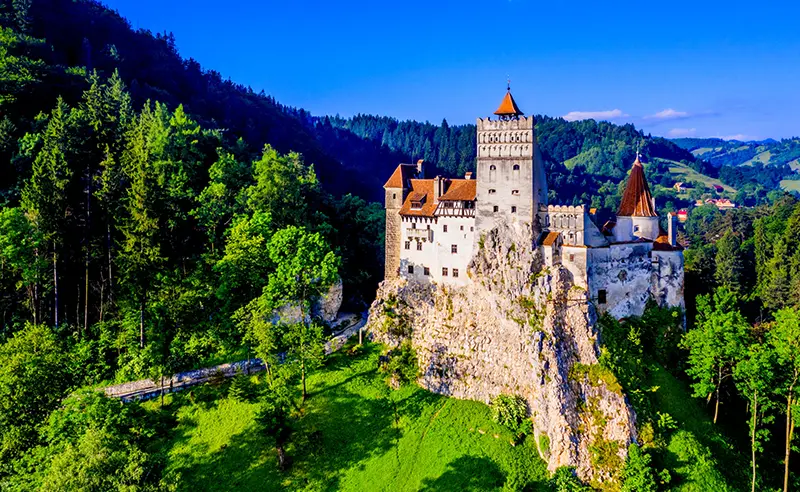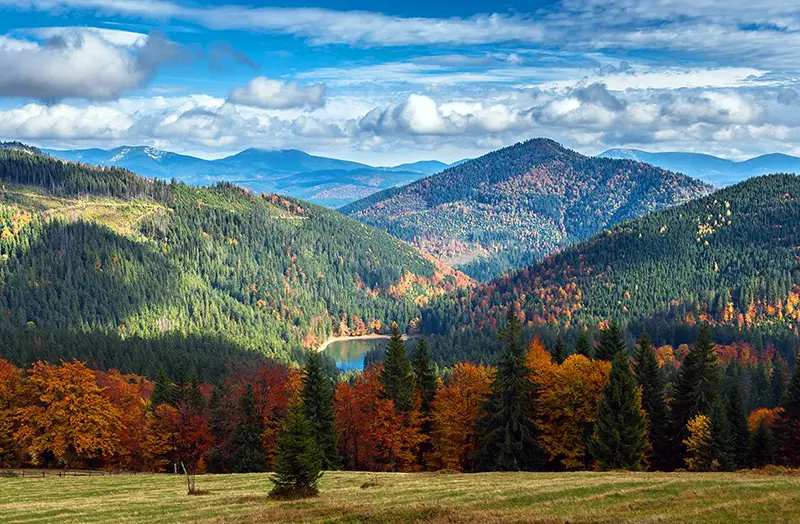The Apennine Mountains are a scenic mountain range running the length of Italy, attracting tourists with their spectacular views, rich flora and fauna, and opportunities for mountain hiking and outdoor activities.
Italy’s picturesque mountains
The Apennines are a mountain range located on the territory of Italy, and more specifically on the Apennine Peninsula. The Apennine Mountains can be called the spine of the peninsula: the mountain chain runs along its territories, crossing them exactly in the middle. Thus, the Apennine Peninsula is divided into western and eastern parts.
In fact, the common name of the Apennine Mountains refers to several mountainous areas at once. Thus, in the northern part of the peninsula are located Ligurian, Tuscan-Emilian, Umbro-Marcan Apennines, the central part of the mountain chain is occupied by the Abruzzo Apennines, and in the south you can see the Campanian, Lucanian and Calabrian Apennines. On average, the height of the mountains reaches 1200-1800 meters. The highest point of the Apennine mountain system is the Corno Grande (2912 meters), which translates as the Big Horn.
The territories stretching at low altitudes (about 500-700 m) are actively used for farming: vineyards are laid out here, lemon and olive trees are grown. At the level of about 900-1000 m mixed forests grow, which are replaced by coniferous trees a little higher up. Closer to the mountain peaks, sun-drenched alpine and subalpine meadows open up. Snow in the Apennine Mountains is found only on the highest mountain in the chain, the Corno Grande. Other parts of the Apennines are too low for glacial formations to form there.
Despite their pastoral beauty, the Apennines pose a serious danger to the inhabitants of Italy. The Apennine mountain system is one of the youngest in the world, so seismic activity in the region is very high. One of the last earthquakes occurred in April 2009 in the town of L’Acquile in the Abruzzo region. Then 308 people died, 1500 inhabitants were injured, according to different data, from 3 to 11 thousand buildings were destroyed. Moreover, in the region of Campanian Apennines in the south of the peninsula there is the legendary volcano Vesuvius, and on the island of Sicily there is the volcano Etna, which is a tectonic continuation of the Apennine Mountains. Both volcanoes are still considered active, and an eruption can occur at any moment. Incidentally, Vesuvius is currently the only active volcano on the entire mainland of Europe.
Although the eruption of Vesuvius has not been an infrequent occurrence in the history of the Apennine Peninsula (the last one dates back to 1944), the most famous case occurred in 79 AD. Even after almost 2,000 years, the story is chilling: back then, the Roman cities of Pompeii and Herculaneum were hidden under a thick layer of volcanic ash. It is thanks to the ash that today scientists have the opportunity to see Pompeii and Herculaneum in pristine condition: all the buildings were protected from the effects of moisture and sunlight, and therefore have survived to this day almost unchanged. Today, Pompeii is a museum city and a UNESCO World Heritage Site.
Nature
The surrounding nature makes the Apennine Mountains a truly man-made work of art. Mountain nature is always characterized by its special beauty. The Apennine Mountains are no exception. Today there are many national parks in the Apennines, where the forests are bustling with wildlife.
The Apennines are a land where locals manage to coexist peacefully with nature without harming it. Although minerals are extracted in the mountains, and part of the territory is planted with crops or fruit trees, Italians take care of preserving the local unique flora and fauna. There are several protected areas in the Apennine Mountains, including the famous national parks of Abruzzo, Lazio and Molise, Gran Sasso and Monti della Laga and Majella.
The main and oldest national park of the Apennine Peninsula – Abruzzo, Lazio and Molise – was opened in 1923 in the Abruzzo Apennines. It is home to some of the rarest species of animals. In the park you can meet Marsican brown bears, which live only in Italy. Today there are only 30-40 specimens of these animals left in the world. Other rare inhabitants of the Abruzzo lands are Eurasian wolves, whose number in Europe is about 25 thousand. In the park, which covers an area of more than 506 km2, there are about 2000 species of birds, including birds of prey. For example, there are goshawks, sparrow hawks, peregrine falcons. In addition to them, there are several species of owls and mountain birds among the park’s inhabitants.
Located near the town of L’Aquila, the Gran Sasso and Monti della Laga Park is no less interesting. These lands are home to a huge number of animal species: deer, chamois, foxes, wild cats. If you’re lucky, you can see a unique mountain plant, the alpine edelweiss. It is a small flower with velvet fluff on light petals, usually growing on alpine meadows. By the way, you don’t have to travel the vast expanses of Gran Sasso and Monti della Laga on foot: there are special paths in the park, so you can go horseback riding or cycling.
There is also a national park of the same name in the area of the Majella mountain range. Here you can not only enjoy all the diversity and colorfulness of mountain nature, but also look into the caves open to tourists. Local attractions include Monte Amaro Mountain (2793 meters), one of the highest peaks in Majella.
But beautiful mountain vistas are not all that awaits the traveler in the Apennine Mountains. In these lands there are many ancient towns, interesting for their rich history. On the banks of the Arno River in the Tuscan Apennines region is Florence. This city is one of the most ancient and art-rich European cultural centers. Guests of Florence can visit the world-famous Uffizi Gallery, where works by such Renaissance masters as Raphael, Giotto and Leonardo da Vinci are on display.
The jewel of the Umbro-Marche Apennines is the city of Perugia. Its charm lies in its beautiful winding streets, medieval and Renaissance architecture, and even earlier periods. One of the attractions of the city is the Church of Sant’Angelo, which was built supposedly in the V-VI centuries. Perugia is also world famous for the chocolate products of the local company Perugina. Chocolate festivals are held here every October.
General information
- Geographical region of Italy.
- Language: Italian.
- Currency: euro.
- The largest rivers: Arno, Tiber, Enza, Parma, Sangro, Pescara, Volturno.
- The largest lakes: Trasimino, Bolsena, Bracciano.
- Major cities in the region: Perugia, Florence, Arezzo, L’Aquila.
- Volcanoes: Vesuvius.
- Area: 84 000 km2.
- Average height of mountains: 1200-1800 m.
- Highest peak: Corno Grande (2912 m).
- Length: 1200 km.
Climate and weather
- In the valleys: sharply continental.
- Average winter temperature: 1°C
- Average summer temperature: 20°C.
- Rainfall: 500-3000 mm.
Attractions
- National Park of Abruzzo, Lazio and Molise;
- Foreste-Casentinesi Park;
- Gran Sasso and Monti della Laga National Park;
- Majella National Park;
- Perugia: Church of Sant’Ercolano, Palace of the Priors;
- Florence: Uffizi Gallery, Palazzo Pitti;
- Arezzo: Archaeological Museum.
Fun Facts
- The Apennines are home to the famous Carrara quarry, famous for the quality of the marble quarried here. Michelangelo Buonarrotti used Carrara marble in his work, particularly in his sculpture “David”.
- The name “Apennines” is believed to be derived from the word Rep, which means “top of the rock” in Celtic.
- The Italian Apennines have their analog on the Moon: the mountains with this name are located near the Sea of Rains.
- The Greek historian Polybius (203-120 B.C.), author of the 40-volume historical work General History, was the first to name the mountain range of the Apennine Peninsula the Apennines.
- In the Ligurian Apennines lies the city of Genoa, the largest port in Italy.
- Despite the water barrier of the Strait of Messina, the Apennine Mountains extend beyond the borders of the Apennine Peninsula, passing into the territory of Sicily.
- In 1924, the famous Italian movie actor Marcello Mastroianni was born in the small village of Fontana Liri in the Apennines.
- The Apennine Mountains are famous for their lakes. Among the particularly famous ones are Lake Trasimeno and Lake Campotosto.




